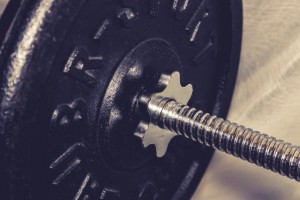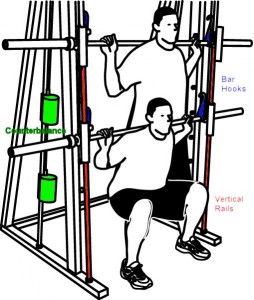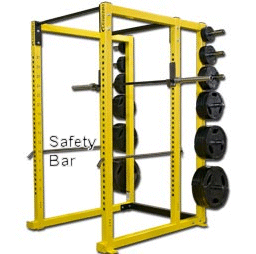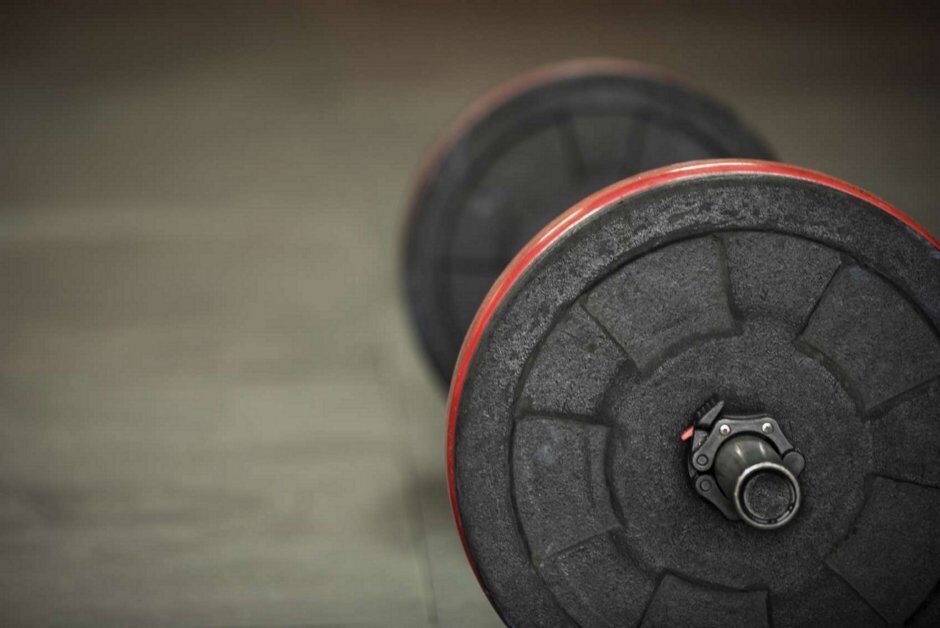Smith Machine Vs Power Rack
 Outside the world of Competitive Powerlifting rages the eternal debate between using a Smith Machine for Squats and Using a Power Rack, aka power cage or squat cage. As a competitive lifter and coach I do not believe that the Smith Machine is viable alternative for free weight squats, especially if you would like to enter your first competition at some point. I will list my reasons later in this post but first lets look at the differences between the two pieces of equipment.
Outside the world of Competitive Powerlifting rages the eternal debate between using a Smith Machine for Squats and Using a Power Rack, aka power cage or squat cage. As a competitive lifter and coach I do not believe that the Smith Machine is viable alternative for free weight squats, especially if you would like to enter your first competition at some point. I will list my reasons later in this post but first lets look at the differences between the two pieces of equipment.
 Features of the Smith Machine
Features of the Smith Machine
A Smith machine consists of a barbell that is fixed within steel rails, allowing only vertical movement. A Smith machine often includes a weight rack in the base to help stabilise it. Some Smith machines have the barbell counterbalanced. Holes or pins are set into the main posts at even intervals, allowing you to lock the barbell at any point in the movement by simply twisting the bar forward and allowing the hook on the bar to engage with the pins.
Features of the Power Rack
A Power Rack is a large metal cage with hooks (either adjustable or fixed) designed to hold a standard Olympic Barbell. The rack also has adjustable horizontal safety bars. The safety bars limit how far the barbell can descend, providing an element of safety when performing free weight movements. The barbell is not attached to the power rack.
a standard Olympic Barbell. The rack also has adjustable horizontal safety bars. The safety bars limit how far the barbell can descend, providing an element of safety when performing free weight movements. The barbell is not attached to the power rack.
Reasons Not to Use a Smith Machine
The first reason not to use a smith machine for squats is that a free weight squat and a smith machine squat are two completely different exercises with different movement patterns due to the smith machine forcing the body into an unnatural plane of motion. When squatting in a smith machine the feet are placed further away from the bar with the body of the lifter leaning against the bar rather than the feet being placed under the bar with the bar resting across the back of the lifters shoulders. This will take your hamstrings and posterior chain out of the picture and put high stress on your knee joints and ligaments.
Risk of Injury
Use of the smith machine leads to a higher risk of injury in the long term, this is again related to the single plane of motions the body is forced into. Knee pain from the Smith Machine is common. The fixed movement pattern places shearing loads on your knees. And it’s hard to position yourself correctly under the bar. If your feet are too much under the bar there is more knee flexion and knee stress. with feet too far forward there is more knee stress because they want to slide forward and your lower back gets in a weak position.
Lack of Hip Extension happens when You tend to lean against the fixed bar, causing less hip extension. Your hamstrings “” knee stabilizers “” will shut down. More shear force on your knees and thus more risks of ACL injuries. Lower Back Injuries are also caused by the unnatural movement pattern. Lower back rounding happens when the feet too far forward putting your lower back in a weak position.
By using a smith machine you are not using your stabiliser muscles, not improving balance and coordination, all of which are needed in sport and everyday life. Lack of stabiliser activation and muscle imbalance is another major cause of injury in the long term.
Less Strength and muscle gain
It has been shown that there is an average of 43% more muscle activation during a free weight squat compared to a smith machine squat and up to 49% more muscle activation in some muscles, which means that squatting using the smith machine produces sub optimal growth of muscles size and strength.
Safety during lifting
The Smith machine is often seen by the novice lifter as a safer option compared to free weights in the power cage, unfortunately this is a false sense of security, The thing about this machine is that it makes you feel invincible. As it aids you thorough the movement, you get confident and feel you can move a lot more weight than what you actually can. With a power cage, when the safety bars are set correctly, you only need to dump the weight onto the bars when you reach failure, you are not going to get crushed if the safety bars are set correctly.
References
J Strength Cond Res. 2009 Dec;23(9):2588-91. doi: 10.1519/JSC.0b013e3181b1b181. A comparison of free weight squat to Smith machine squat using electromyography.
Smith machines are not good to use
The one machine in the gym you should never use (link no longer available)
The American Journal of Sports Medicine (Impact Factor: 4.36). 01/2005; 32(8):1962-7. Flexion-distraction injury of the thoracolumbar spine during squat exercise with the smith machine.
CC0 1.0 Universal (CC0 1.0) Licence for Image of weights
- Comments (0)
- Facebook Comments

